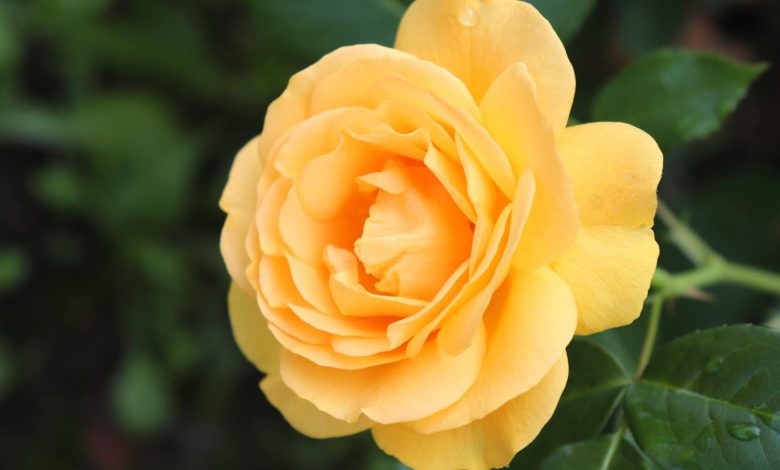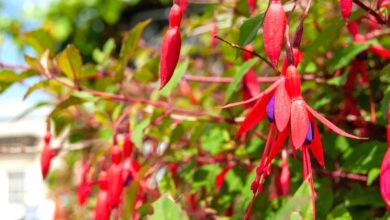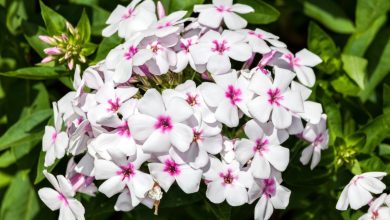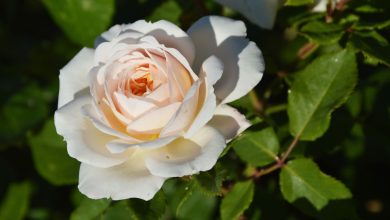Disease-Free Garden with These 15 Roses

Welcome to Disease-Free Garden with These 15 Roses! Here you will find a selection of 15 disease-resistant roses that are perfect for creating a beautiful, low-maintenance garden. These roses are easy to care for and are guaranteed to provide you with stunning blooms for years to come. All of the roses are hardy and resistant to common diseases such as black spot, powdery mildew, and rust. With proper care, these roses will remain healthy and disease-free for many years. Enjoy the beauty of your garden without the worry of disease!
Maximizing Disease Resistance in Your Garden with These 15 Roses
Maximizing disease resistance in your garden with roses is an important part of gardening. Roses are one of the most popular garden plants, but they are also susceptible to a variety of diseases. To ensure that your roses stay healthy and disease-free, it is important to choose varieties that are resistant to common diseases.
Fortunately, there are many varieties of roses that are resistant to common diseases. Here are 15 of the best roses for disease resistance:
1. Knock Out Rose: This is a hybrid shrub rose that is known for its disease resistance. It is also easy to care for and produces beautiful, long-lasting blooms.
2. Grandiflora Rose: This is a tall, upright rose that is known for its disease resistance. It produces large, fragrant blooms in a variety of colors.
3. Floribunda Rose: This is a hybrid rose that is known for its disease resistance. It produces clusters of small, fragrant blooms in a variety of colors.
4. Climbing Rose: This is a vigorous climber that is known for its disease resistance. It produces large, fragrant blooms in a variety of colors.
5. Rugosa Rose: This is a shrub rose that is known for its disease resistance. It produces large, fragrant blooms in a variety of colors.
6. Hybrid Tea Rose: This is a hybrid rose that is known for its disease resistance. It produces large, fragrant blooms in a variety of colors.
7. Polyantha Rose: This is a shrub rose that is known for its disease resistance. It produces clusters of small, fragrant blooms in a variety of colors.
8. David Austin Rose: This is a hybrid rose that is known for its disease resistance. It produces large, fragrant blooms in a variety of colors.
9. Hybrid Musk Rose: This is a hybrid rose that is known for its disease resistance. It produces clusters of small, fragrant blooms in a variety of colors.
10. Shrub Rose: This is a shrub rose that is known for its disease resistance. It produces large, fragrant blooms in a variety of colors.
11. Old Garden Rose: This is an old-fashioned rose that is known for its disease resistance. It produces large, fragrant blooms in a variety of colors.
12. English Rose: This is a hybrid rose that is known for its disease resistance. It produces large, fragrant blooms in a variety of colors.
13. Miniature Rose: This is a miniature rose that is known for its disease resistance. It produces small, fragrant blooms in a variety of colors.
14. Ground Cover Rose: This is a low-growing rose that is known for its disease resistance. It produces small, fragrant blooms in a variety of colors.
15. Wild Rose: This is a wild rose that is known for its disease resistance. It produces small, fragrant blooms in a variety of colors.
By choosing roses that are resistant to common diseases, you can ensure that your garden stays healthy and disease-free. With the right care and selection of disease-resistant roses, you can enjoy beautiful blooms for years to come.
Planting and Caring for Disease-Free Roses
Roses are one of the most popular and beloved flowers in the world. Their beauty and fragrance have been enjoyed for centuries, and they are often seen as a symbol of love and beauty. However, roses be susceptible to disease and pests, which can cause become unhealthy and even die. To ensure that your roses stay healthy and disease-free, it is important to take the proper steps in planting and caring for them.
When planting roses, it is important to choose a spot that gets plenty of sunlight and has well-draining soil Roses need at least six hours of direct sunlight each day to stay healthy and thrive. The soil should be loose and well-draining, as roses do not like to be in standing water. Before planting, it is also important to make sure the soil is free of any weeds or other plants that could compete with the roses for nutrients.
Once the roses are planted, it is important to water them regularly. Roses need at least an inch of water per week, and more during periods of extreme heat or drought. It is also important to fertilize the roses every few weeks to ensure they get the nutrients they need to stay healthy.
To keep roses disease-free, it is important to inspect them regularly for signs of disease or pests. Common diseases of roses include black spot, powdery mildew, and rust. If any of these diseases are spotted, it is important to take steps to treat them immediately. Common pests of roses include aphids, Japanese beetles, and spider mites. If any of these pests are spotted, it is important to take steps to treat them as soon as possible.
Finally, it is important to prune roses regularly to keep them healthy and disease-free. Pruning helps to remove dead or diseased branches and encourages new growth. It is important to prune roses in the early spring, before the new growth begins.
By following these steps, you can ensure that your roses stay healthy and disease-free. With proper planting and care, you can enjoy the beauty and fragrance of roses for years to come.
Selecting the Right Variety of Rose for Your Garden
Roses are one of the most popular and beloved flowers in the world. They are often used to express love and appreciation, and they make a beautiful addition to any garden. However, when selecting the right variety of rose for your garden, there are several factors to consider.
First, consider the climate in which you live. Different varieties of roses thrive in different climates, so it is important to choose a variety that is well-suited to your region. If you live in a warm climate, you may want to consider hybrid tea roses, which are known for their large, fragrant blooms. If you live in a cooler climate, you may want to choose a variety of shrub roses, which are more tolerant of cold temperatures.
Next, consider the amount of sunlight your garden receives. Roses need at least six hours of direct sunlight each day in order to thrive. If your garden is shaded, you may want to choose a variety of shade-tolerant roses, such as climbing roses or ground cover roses.
Finally, consider the size of your garden. If you have a large garden, you may want to choose a variety of roses that will spread out and fill the space. If you have a smaller garden, you may want to choose a variety of miniature roses, which are perfect for small spaces.
No matter what variety of rose you choose, it is important to provide your roses with the proper care. Make sure to water them regularly and fertilize them at least once a month. Prune them regularly to encourage new growth and remove any dead or diseased branches. With the right care, your roses will thrive and bring beauty and fragrance to your garden for years to come.
Choosing the Best Location for Disease-Free Roses
When it comes to growing roses, one of the most important factors to consider is the location. Roses are susceptible to a variety of diseases, so it is important to choose a location that is disease-free. Here are some tips for choosing the best location for disease-free roses.
First, consider the climate of the area. Roses prefer a climate that is not too hot or too cold. Choose a location that has mild temperatures, with temperatures that stay between 65 and 85 degrees Fahrenheit. Avoid areas that experience extreme temperatures, as this can cause disease and damage to the roses.
Second, look for a location that is well-drained. Roses require well-drained soil in order to thrive. If the soil is too wet, it can cause root rot and other diseases. Make sure the soil is not overly saturated and that it drains quickly.
Third, choose a location that gets plenty of sunlight. Roses need at least six hours of direct sunlight each day in order to bloom. Avoid areas that are shaded or that have too much shade.
Fourth, consider the soil type. Roses prefer a soil that is slightly acidic, with a pH between 6.0 and 6.5. Test the soil to make sure it is within this range. If it is not, consider adding amendments to the soil to adjust the pH.
Finally, look for a location that is free from pests and diseases. Roses are susceptible to a variety of pests and diseases, so it is important to choose a location that is free from these. Inspect the area for signs of pests or diseases, and if any are present, take steps to eradicate them before planting roses.
By following these tips, you can choose the best location for disease-free roses. With the right location, you can ensure that your roses will thrive and provide you with beautiful blooms for years to come.
Understanding Common Rose Diseases and How to Prevent Them
Roses are one of the most popular flowers, known for their beauty and fragrance. Unfortunately, roses are also prone to various diseases that can damage or even kill the plants. Understanding common rose diseases and how to prevent them is essential for any gardener who wants to keep their roses healthy and beautiful.
The most common rose diseases are black spot, powdery mildew, rust, and rose rosette. Black spot is a fungal disease that causes dark spots on the leaves of roses. It is most common in humid climates and can be prevented by avoiding overcrowding of plants, removing dead leaves, and spraying with a fungicide. Powdery mildew is a white, powdery substance that appears on the leaves and stems of roses. It is caused by a fungus and can be prevented by planting in a sunny, well-ventilated area and avoiding overhead watering. Rust is a fungal disease that causes reddish-brown spots on the leaves of roses. It is most common in wet climates and can be prevented by planting in a sunny, well-ventilated area and avoiding overhead watering. Rose rosette is a virus that causes deformed leaves and cankers on the stems of roses. It is spread by a mite and can be prevented by removing infected plants and spraying with an insecticide.
In addition to these common diseases, roses can also be affected by pests such as aphids, thrips, and spider mites. Aphids are small, green insects that feed on the sap of roses and can be prevented by spraying with an insecticide. Thrips are tiny, black insects that feed on the leaves of roses and can be prevented by avoiding overcrowding of plants and spraying with an insecticide. Spider mites are tiny, red spiders that feed on the leaves of roses and can be prevented by avoiding overcrowding of plants and spraying with an insecticide.
To keep roses healthy and disease-free, it is important to provide them with the proper care. Roses should be planted in a sunny, well-ventilated area and watered deeply but infrequently. Dead leaves debris should be removed from the area and plants should pruned regularly. Mulch should be applied to soil to help retain moisture control weeds. Finally, spraying with a fung or insecticide can help diseases and pests.
By understanding common rose diseases how to prevent them, gardeners can ensure that their roses remain healthy and beautiful. With proper care and maintenance, roses can be enjoyed for years to come.
In conclusion, a Disease-Free Garden with These 15 Roses is a great way to create a beautiful and vibrant garden. Not only are these roses disease-resistant, but they are also available in a variety of sizes, making them perfect for any garden. With proper care and maintenance, these roses will thrive and bring beauty and life to your garden for years to come.
Excerpt
These 15 roses are disease-resistant and are ideal for creating a beautiful, disease-free garden. They are hardy and easy to care for, blooming in a variety of colors from classic reds and pinks to vibrant oranges and yellows. They are sure to add beauty and charm to any garden.



